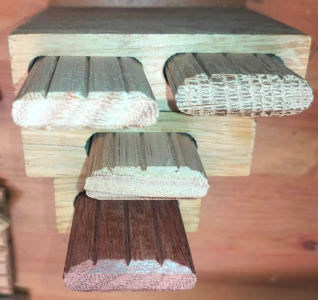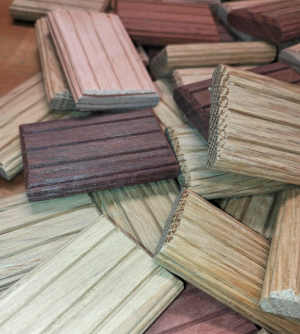Regarding the benefits of the Domino and whether knock offs will be Domino killers...
1. I have gone through an evolution of making mortise and tenon joints over the past several years. I have used a router table and a table saw to cut the tenons. I have used a router table to cut mortises. When I "advanced" to floating tenons, I built a few jigs to cut the mortises with a hand held plunge router. All of the methods I used were fairly tedious. Cutting the mortises involved a fair bit of vacuuming out of the mortises, for example.
I have had the Domino for a year or two. There is a learning curve, but it is fairly gentle. (Watching Sedge's videos was very helpful.) I build my cabinets mostly with stiles and rails, and a few of the mortises take good control to get them perfectly aligned. But even when I am a little off, the result is easily addressed with minor sanding. This issue is with just the mortises that receive the rails that cross the cabinet connecting the two side panels. The others are a piece of cake. If I was building cabinets out of plywood, this would pretty much be a non-issue, especially now that I have the TSO Big Foot.
Bottom line - I love this machine. It is so much faster than what I was doing before. I still get a sense of satisfaction whenever I use it, which is fairly often. Punching out a bunch of mortises in a few minutes is a gas.
2. As far as clones go...
My first track saw was a Makita. It got good reviews on YouTube, and years ago when I worked construction, I was a big Makita fan. Sadly, their rails are not dead on consistent, which is a huge pain. When I connect two rails together for a long rip, or switch from one rail to another, such as going from rips to cross cuts on the MFT, the saw is either loose on one rail or tight on the other. Switching from rips to cross cuts, this is just a time suck. But running the saw down two connected rails for a long rip, it is a pita. Oh yeah, and looking at the method Makita uses to adjust the tightness of the saw on the track, you can see that they cheaped out, and that is another cause of the problems running the saw down the rail.
So bottom line, where precision is needed, I would stick with the company that is known for its precision.
Just my opinion, for what it's worth (about .02 USD). Some of us want precision, consistency, and ease of use, and are willing to pay for it. Others prefer to put time and effort rather than money into woodworking. It's all good.


